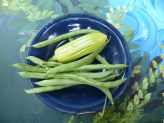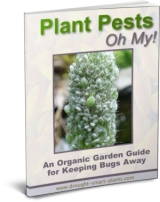Crop Rotation
Succession Planting for Disease Control
Crop rotation is the practice of moving the plants or families of plants that are in each garden bed.
Planting permanent raised beds with a different crop each year can prevent many disease problems from overwhelming the plants.
In some cases, certain groups of crops such as the related mustard crops; cabbage, broccoli , kale , cauliflower and other Chinese greens and Brassicas are all prone to club root, a bacterial infection of the roots.
The bacterium remains in the soil and will infect subsequent crops of the same family.
Other families won’t have the same susceptibility to the bacterium, so can be grown safely in the spot where the cole crops grew the previous year.
Over time, say several seasons, the bacterium dies out of the soil, and eventually it’s safe to plant the susceptible crop once again.
Keeping track of crop rotation cycles in the garden is the most difficult part of the system.
If you’re growing crops in succession, or ‘stacking’ crops, it can be a nightmare to try and decide which crops to grow after each other.
Some people have a system of growing root, leaf and fruit crops after each other; for instance, you would start with a crop of potatoes, follow it with cabbage, and then grow tomatoes. This works well, for a rough guide.
It’s also advantageous to add lots of finished compost to the soil, to provide lots of micro-organisms that will take on the task of immobilizing the ‘bad guys’ – microbes that are damaging to crops.
Many people also think that a healthy plant will be more resistant to disease and insects, in which case, adding compost is exactly the right thing to do.
Gardeners have always been advised to throw away any diseased crops, but adding them to a really hot compost pile can take care of any potential problem microbes.
There is also a school of thought that using this compost on a bed that has had a disease problem will inoculate it with beneficial microorganisms perfectly geared to eliminate the disease. There is no proof of this, but it’s an interesting theory for those that want to test it in their own conditions.With many gardeners using raised beds or hay bale gardening techniques, as well as no-till gardening methods, it’s now not as simple to completely replace all of the soil in an existing bed.
Moving the crops around so they have the best chance of being planted in clean, disease free beds gives them a head start in their race to harvest time.
Sign up for
Out in the O-Garden Newsletter
and get your five part composting E-course - FREE!
Join my
email
group and get tips, information and more monthly-ish.



New! Comments
Have your say about what you just read! Leave me a comment in the box below.